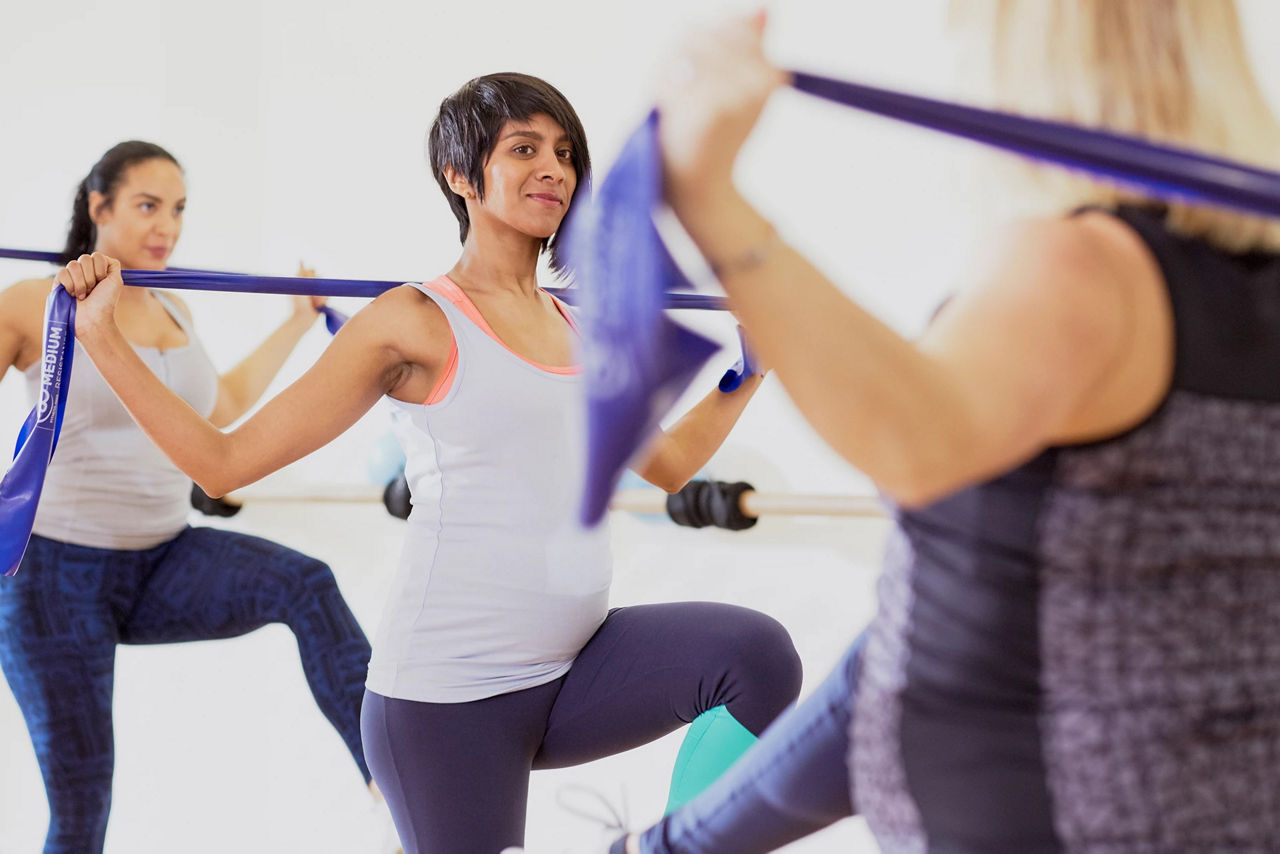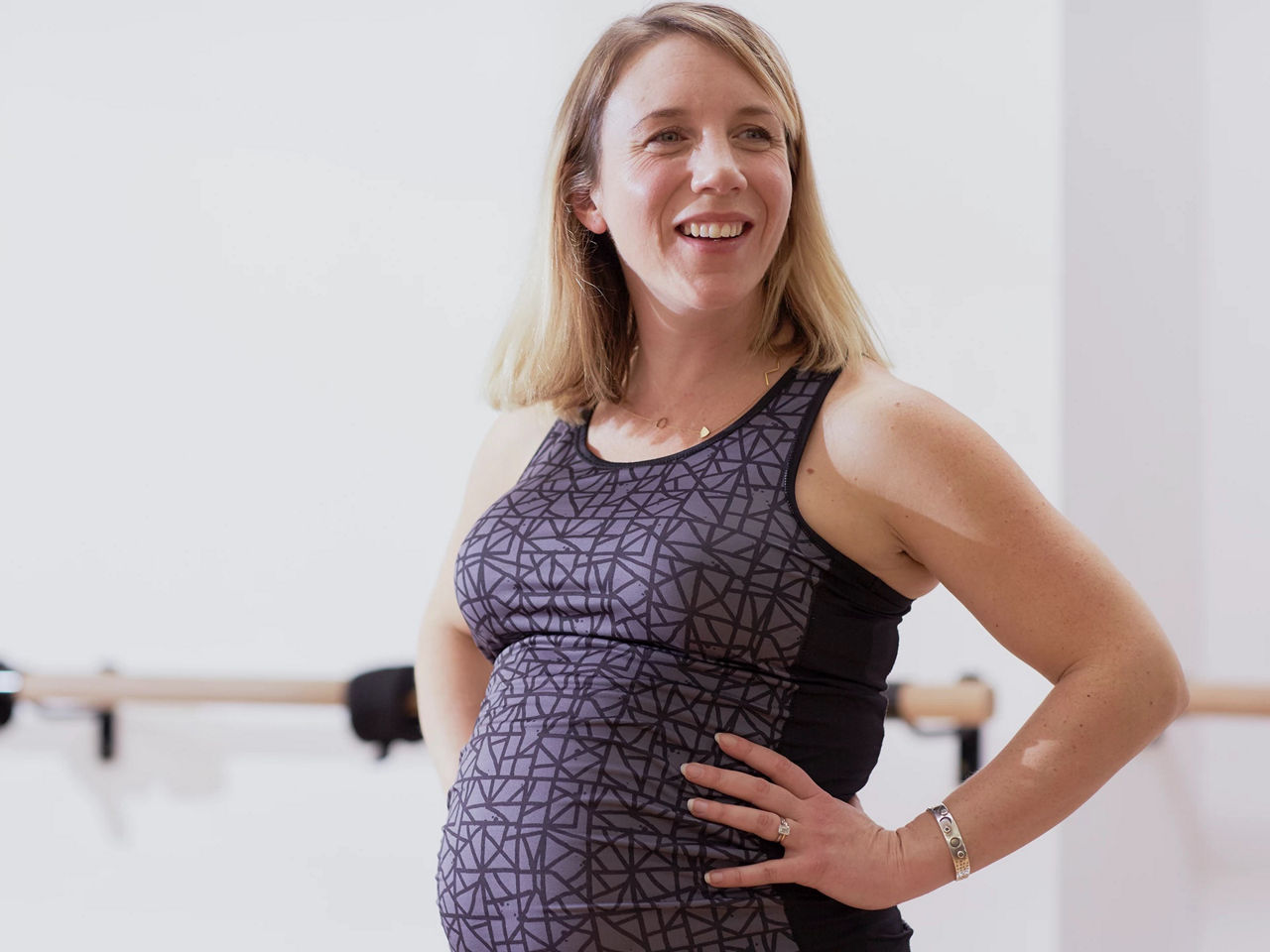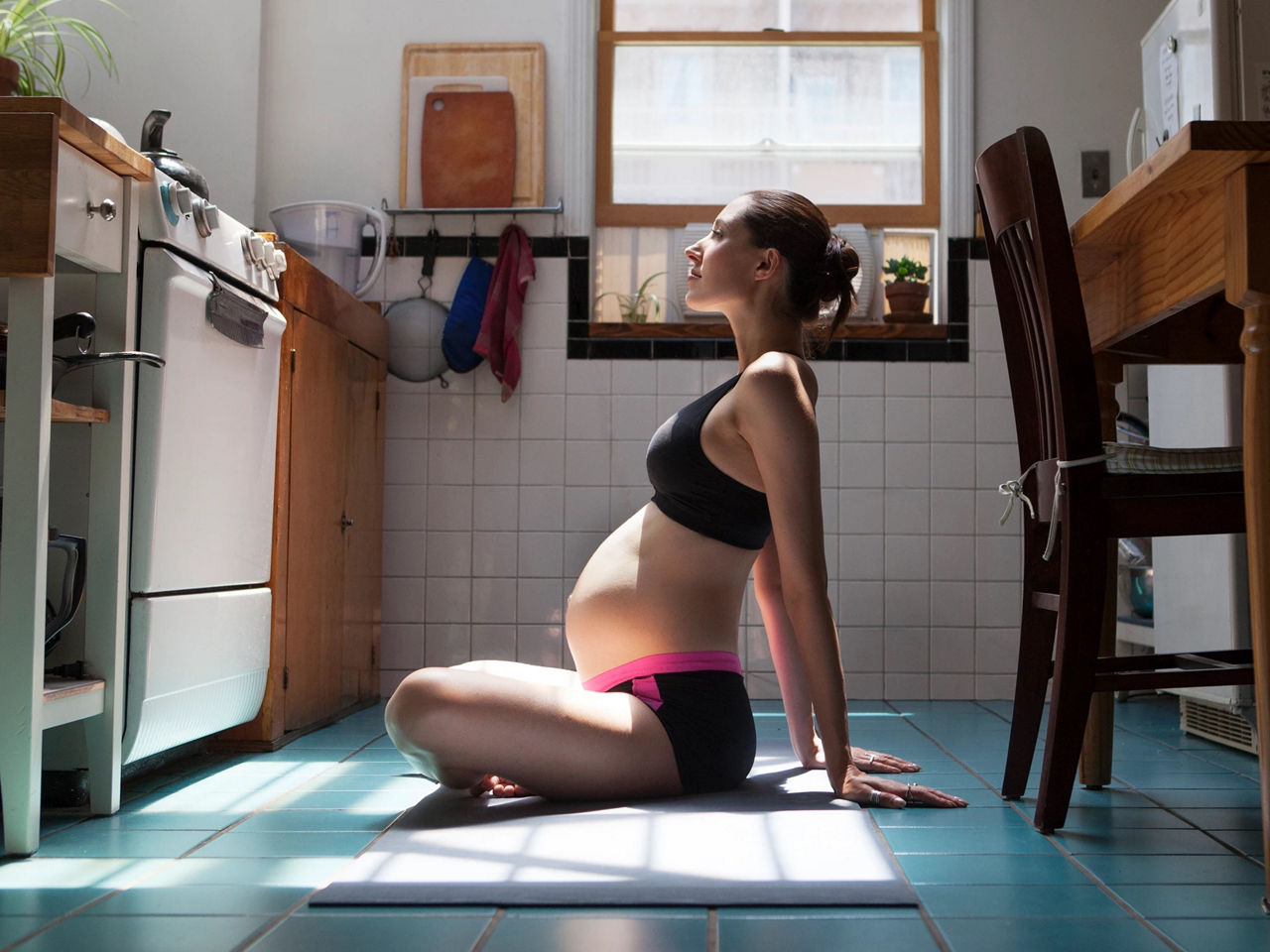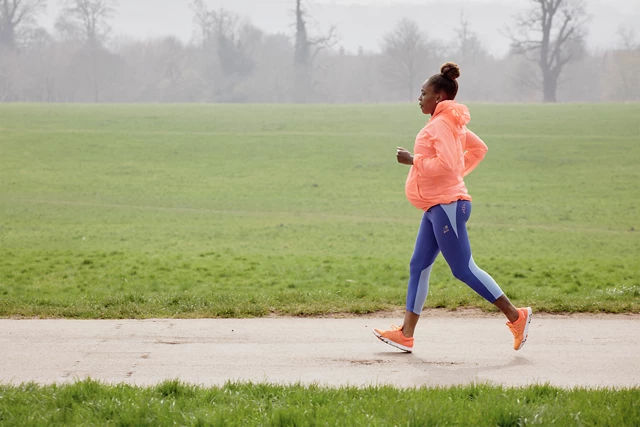Pregnancy strength & weight training
Research shows that strength or resistance training can help to improve your endurance levels in preparation for labour, decrease lower back and pelvic pain1, and help you manage pregnancy weight gain2. It can also lead to fewer complications during labour and delivery and a shorter hospital stay3. The pelvic floor exercises, in particular, can reduce your chance of experiencing urinary incontinence problems during and after pregnancy4. Strength Coach Pip also believes it helps you train for the physical side of being a mum – carrying a baby and lifting buggies and car seats can be hard work!

Pregnancy strength & weight training exercises
What you'll need
You don’t need much equipment to start strength training, just a few basics:
- A towel or mat if you’re working out on a hard floor.
- A light or medium weight resistance band.
- Arm or leg weights are not essential but can be used to increase intensity. Alternatively, use water bottles, tins or anything weighing roughly 1-2kgs that you have to hand.
Pregnancy strength training routines by trimester
Choose your trimester:
Pip’s first trimester video is designed specifically for your first 12 weeks of pregnancy. Follow along as she demonstrates pregnancy-safe moves that will help strengthen your upper and lower body and keep you active.
If you’re feeling a little more energised now you’re into your second trimester, follow Pip as she demonstrates her trimester 2 strength training moves, using a resistance band to give you a full-body workout.
Pip’s third trimester strength training workout reduces the intensity and includes more moves you can do whilst seated or lying down. They’ll still keep you active with the help of a resistance band.
How to weight & strength train safely in pregnancy
- Always inform your midwife or doctor of your intention to exercise during pregnancy.
- Eat little and often to maintain your energy levels.
- Remember to breathe deeply and continuously, rather than holding your breath.
- Never work to your maximum – scale down your efforts to around 70% of your usual lifting weight, intensity or exertion level.
- Avoid high-impact exercises which cause you to move in a jerking motion and place stress on your joints.
- Avoid sit-ups and twists, and don’t lift heavy weights above your head. These types of movement can put pressure on your abdominals, leading to separation of the stomach muscles.
- Stay hydrated by drinking water regularly throughout your day, as well as during exercise sessions.
- Listen to your body. If it feels uncomfortable, either physically or mentally, take a break.
related articles
More sports

Need some help?
You can get quick answers to common questions in our FAQs.
Alternatively, if you need help with general pregnancy or baby advice, or maybe on using or ordering our products - our expert team are always on hand to talk about feeding your baby.
- Ozdemir S et al. Evaluation of the efficacy of an exercise program for pregnant women with low back and pelvic pain: a prospective randomized controlled trial. J Adv Nurs 2015;71(8):1926-39.
- Muktabhant B et al. Diet or exercise, or both, for preventing excessive weight gain in pregnancy. Cochrane Database Syst Rev 2015;15(6):CD007145.
- May LE et al. Effects of maternal exercise on labor and delivery. In: Physiology of prenatal exercise and fetal development. SpringerBriefs in Physiology, 2012. p. 11-5.
- Mørkved S et al. Pelvic floor muscle training during pregnancy to prevent urinary incontinence: A single-blind randomized controlled trial. Obstet Gynecol 2003;101(2):313-9.
Last reviewed: 3 June 2020
Reviewed by Nutricia’s Medical and Scientific Affairs Team








